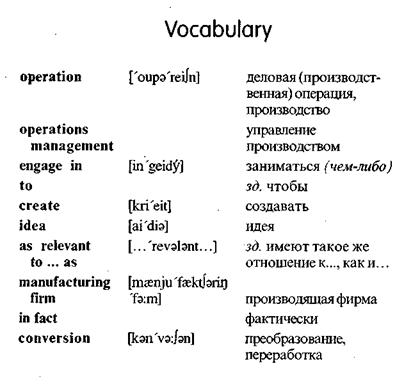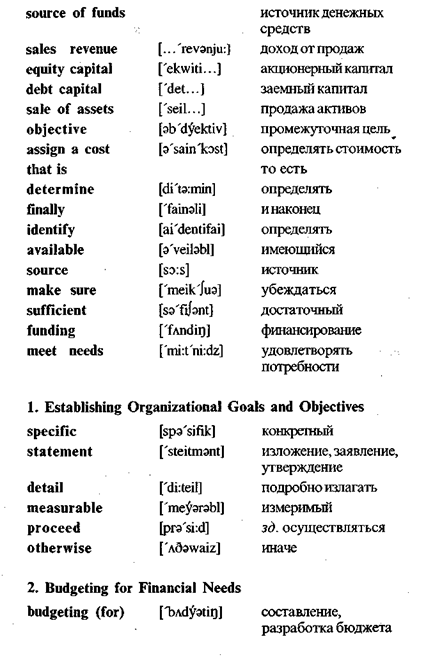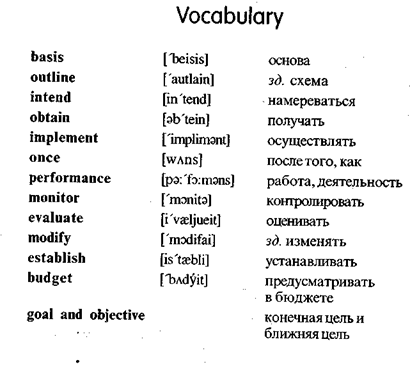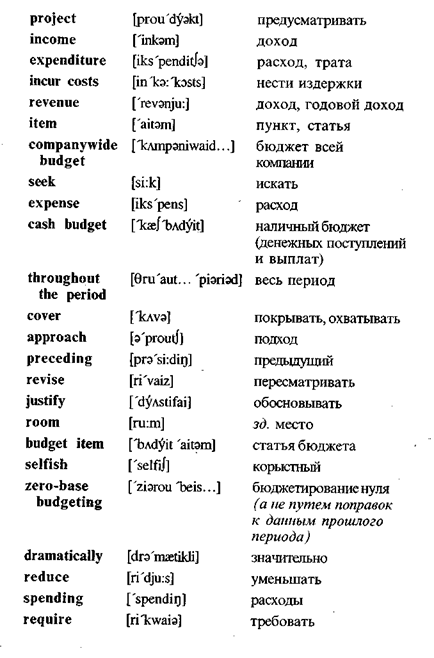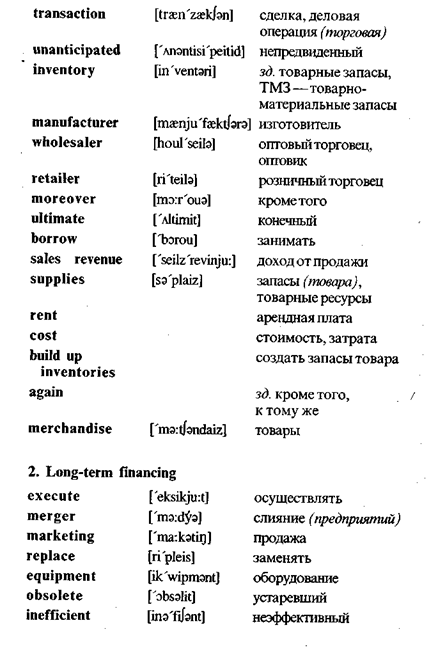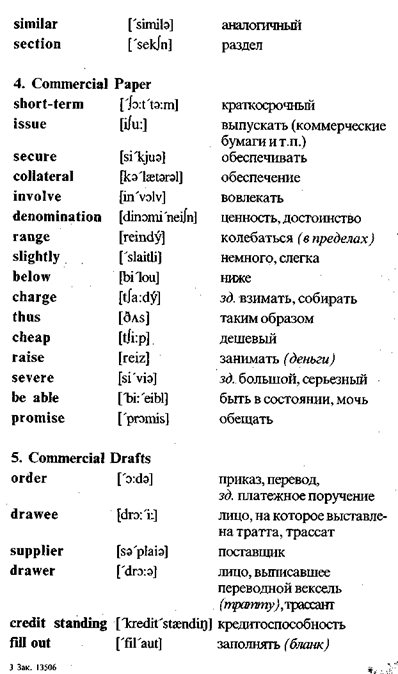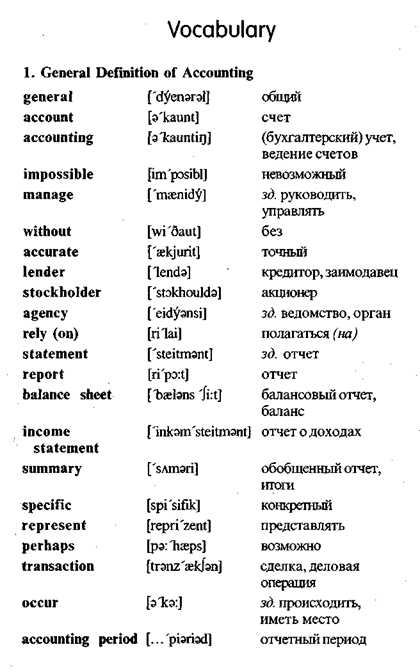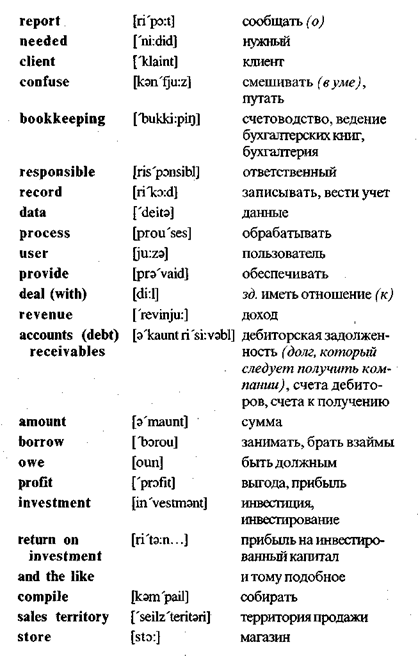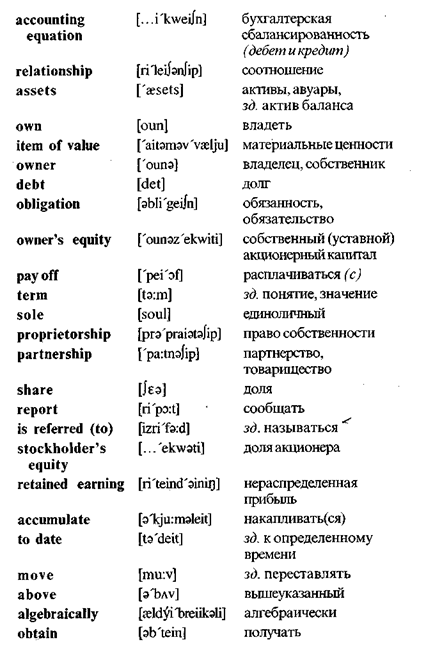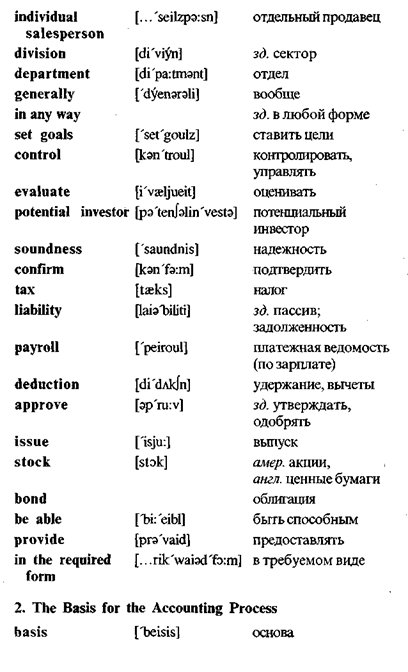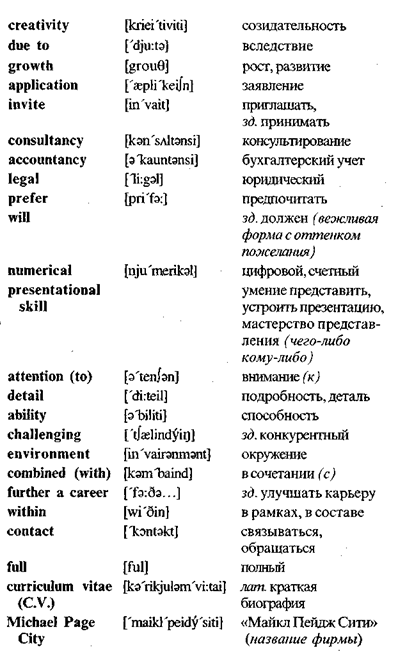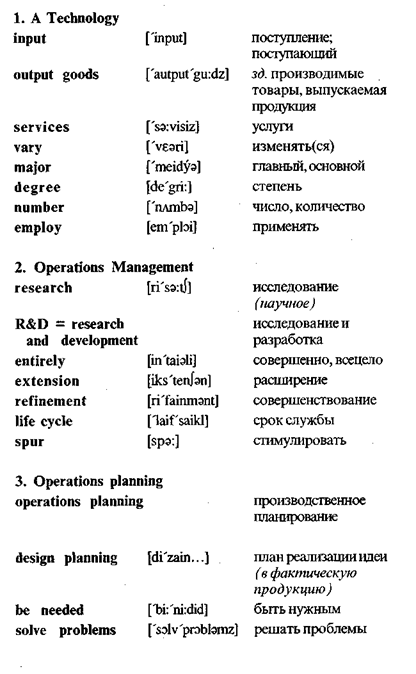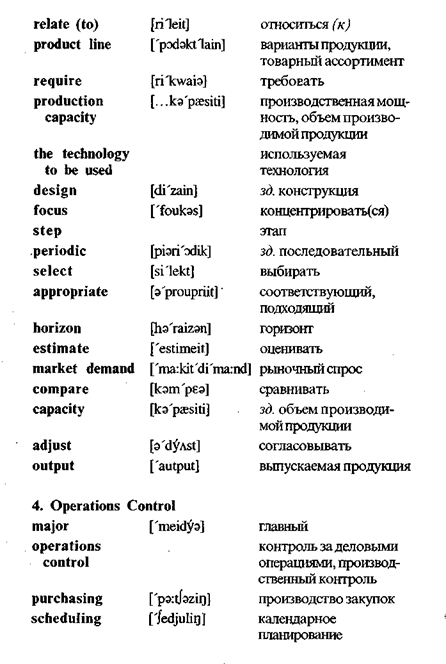IV. Translate into English.
1. Источники необеспеченного краткосрочного финансирования включают торговые кредиты, долговые обязательства, банковские ссуды, краткосрочные долговые обязательства (кредитно-денежные документы) и тратты (переводные векселя).
2. Торговый кредит - это отсрочка платежа, которую понставщик предоставляет своим клиентам.
3. Долговое обязательство - это письменное обязательство заемщика платить определенную сумму денег кредитору.
4. В отличие от торгового кредита долговые обязательства требуют, чтобы заемщик платил проценты.
5. Коммерческие банки предоставляют необеспеченные краткосрочные ссуды своим клиентам, которые меняются в зависимости от (with) кредитоспособности каждого заемщика.
6. Коммерческая бумага - это краткосрочное долговое обязательство, выпускаемое крупными корпорациями..
7. Коммерческая бумага не имеет специального (special) обеспечения.
8. Тратта (переводной вексель) Чэто письменный приказ, требующий, чтобы трассат (лицо, на которое выставлена тратта) платил конкретную сумму денег поставщику за товары или слуги.
9. Тратта часто используется, когда поставщик не верен в кредитоспособности клиента.
. Answer the questions.
1. What is unsecured financing?
2. What are the sources of unsecured short-term
financing?
3. What is a trade credit?
4. What is the
difference between a promissory note and trade
5. In what case a loan application may be rejected
by a bank?
6. What is a commercial paper secured by?
7. Why issuing a
commercial paper is cheaper than getting
8. What is a commercial draft?
9. Can commercial drafts be used as collaterals for loans?
I. Make up a written abstract of the above
text.
II. Retell the prepared abstract.
Unit7
Accounting
1. GENERAL DEFINITION OF
ACCOUNTING
Today, it is impossible to manage
a business operation without
Accounting is the process of systematically collecting, analyzing, and reporting financial information. The basic product that an accounting firm sells
is information needed for the clients.
Many people confuse accounting with bookkeeping. Bookkeeping is a necessary part of accounting. Bookkeepers are responsible for recording (or
keeping) the financial data that the accounting system processes.
The primary users of accounting
information are managers. The firm's accounting system provides the information
dealing
agers plan and set goals, organize, motivate,
and control. Lenders
2. THE BASIS FOR THE
ACCOUNTING PROCESS
The basis for
the accounting process is the accounting equation.
It shows the
relationship among the firm's assets, liabilities, and owner's equity.
Assets
Liabilities
Owner's equity
The
relationship among these three terms is the following:
Owners'
equity <=
(The owners'
equity is equal to the assets minus the
liabilities)
For a sole proprietorship or
partnership, the owners' equity is shown as the difference between assets and
liabilities. In a partnership, each partner's share of the ownership is reported separately by each owner's name. For
a corporation, the owners' equity is usually referred to as stockholders<'
By moving the above three terms
algebraically, we obtain the
Assets <=
(The assets
are equal to the liabilities plus the
owners' equity)
3. A BALANCE SHEET
A balance sheet (or statement of
financial position), is a
4. AN INCOME STATEMENT
An income statement is a summary
of a firm's revenues
5. THE IMPORTANCE OF THE ABOVE TWO STATEMENTS
The information contained in
these two financial statements

Exercises
I. Translate into Russian.
Accounting; bookkeeping; accounting
information; lender;
II. Find the English equivalents.
Бухгалтерский чет (бухучет); точная и своевременная информация; акционер;кредитор;
ведомство (агентство); отчет
(доклад); балансовый отчет;
отчет о доходах; отчетный период; счетоводство (бухгалтерия); финансовая информация;
прибыль (доход); выгода (прибыль); прибыль на инвестированный капитал; дебиторская задолженность; обязательство; денежное обязательство (пассив); платежная ведомость; акция (ценная бумага); активы; долг; счет прибылей (иубытнков); ежегодный отчет; доходность; собственный акционернный капитал; одобрять; сравнивать;
подтверждать; занимать (брать взаймы); обрабатывать (информацию).
. Fill in the blanks.
1. Managers, lenders, suppliers and
government agencies relay
2. These two reports -
3. The basis for the accounting process is....
4. Assets are the...
5. Liabilities are the firm's debts and....
6. Owners' equity is the difference
between a firm's...
7. A balance sheet is...
8. A balance sheet must demonstrate
that the accounting... does indeed balance.
9. An income statement is a summary of a firm's
revenues and
... during a specific accounting
period. >
10. The information in
these two financial statements becomes
IV. Translate into English.
1. Бухгалтерский учет - это процесс систематического сбора и сообщения финансовой информации.
2.
Балансовый отчет и отчет о доходах являются (are) основой процесса бухучета.
3. Балансовый отчет (или отчет о финансовом положении) - это (is) обобщенный отчет об активах фирмы, пассивах и собственном акционерном капитале.
4. Отчет о доходах - это обобщенный отчет о доходах и расходах за (during) конкретный отчетный период.
5. Основой процесса бухгалтерского чета является буху-четное равнение.
6. Согласно (according to)
бухучетному равнению активы равны пассивам (денежным обязательствам) плюс собственный акционерный капитал.
7. Собственный акционерный капитЧэто разность между активами и пассивами.
8. Балансовый отчет должен показывать, что бухучетное равнение балансируется.
9. Результаты (results) балансового отчета должны сравниваться (be compared)
с результатами за (for) прошлый отчетный период.
10. Эта информация дает картину доходности фирмы, ее финансового положения и ее деятельности в области (area) дебиторской задолженности, товарных запасов и долгового финансирования.
. Questions and assignments.
1. What is accounting? Give a short definition.
2. Is it
possible to manage a business operation without accurate
3. Who needs accounting information? Explain why.
4. What is the basis for accounting process?
5. State (изложите)
6. What is a balance sheet? Give a short
definition.
7. What must a balance sheet show?
8. What is an income statement?
9. What can be
computed from the information contained in a
10. Do the ratios computed from this
information provide a picнture of a firm's profitability and its financial
position?
11. Is this information for competitors?
I. Read and translate this newspaper
advertisement.

II. Answer the questions.
1. What is the name of the firm
that has published this ad (adverнtisement)?
2. Who is the firm's client?
3. What information have you got
about the bank for which the
4. What kind of (каких)
5. What kind of experience must the invited
professionals have?
6. Does experience in accountancy matter (имеет значение)1
7. What will preferred candidates demonstrate?
8. What chief traits (основные черты)
9. Is it necessary to send a full
curriculum vitae to Michael Page City firm?
10. What words in the ad
characterize the team within which the
Unit 8
Operations Management
Operations management consists of
all the activities that managers engage in to create products (goods, services, and ideas).
Operations are as relevant to service organizations as to manufacturing firms. In fact,
production is the conversion of resources
1. A technology
2. Operations
management
3. Operations planning
4. The major
areas of operations control are
purchasing, inventory
control, scheduling, and quality control. Purchasing in-
olves selecting suppliers and
planning purchases. Inventory control is the management of stocks of raw materials, work process,
5. Automation,
